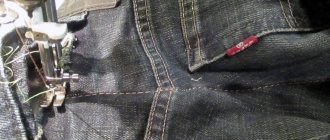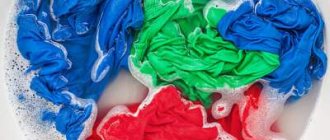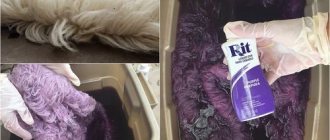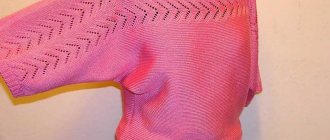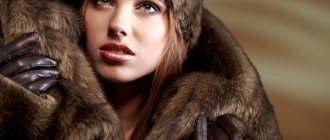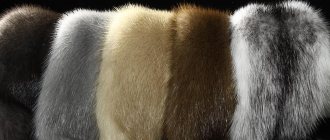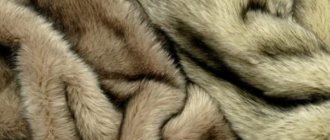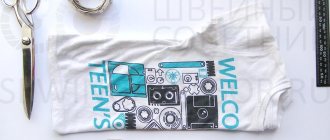About painting
Dyeing fur with hair dye at home is now widespread. The fur of mink, khanorika, kolinsky, marten, muskrat and other animals can be painted with durable household cream paints. Currently, there are a large number of different cream paints on the market, prices range from several hundred to tens of rubles.
To dye fur, it is advisable to choose a paint that is not expensive, light-resistant and resistant to the aquatic environment. It is very convenient to paint small skins, pieces and ready-made fur caps for hats with such paints. One or two packs are required for one skin, depending on the size of the fur and the fur. Paint consists of the contents of two tubes: a tube of paint and a tube of oxidizing agent (peroxide). After mixing the contents of two tubes in a separate container, the paint is applied as a spread and rubbed into the fur with a swab.
Spread paint application
When dyeing fur with oxidizing or acidic dyes, many inconveniences arise. For example, when painting with oxidizing dyes, it is not advisable to paint one or two skins or a sewn fur cap for a hat, since several components are required: black urzol for fur D, pyrocatechin or resorcinol, ammonia 25%, salt and oxidizing agent (perhydrol 30%). Before painting, the fur must be etched in a chromium paint in an acidic environment. The etching and painting processes are lengthy and take up almost the entire daylight hours; painting is carried out using the dip method in separate baths at a temperature of 35 -38 degrees.
When dyeing fur with acid dyes, the skins must be tanned with an increased amount of chrome tanning agent so that the skins do not cook. The temperature of the dye solution is 60 - 65 degrees.
It is not advisable to dye fur in small quantities; it is more economical to prepare a batch of skins and spend the entire daylight hours on dyeing.
When dyeing fur with hair dyes, everything is much simpler; you can dye one or two skins in 1 - 2 hours, using a spread method, rubbing the dye into the fur. This wastes one or two packs of paint. The costs are small.
What you need for work
To dye any fur, first of all, you need to buy paint. It is advisable to completely repaint only faded products. If faded or peeling spots appear on your fur coat in some areas, it is better to touch them up with a spray. The main thing is to choose the right shade of aerosol.
Methods for dyeing fur products:
- Spread (by rubbing oxidative paint or acid dye into the fur).
- Spraying, tinting (spraying aerosol paint over the pile).
Tips that will come in handy when dyeing fur:
- the paint should be darker than the original color of the fur product;
- during the dyeing process, do not wet the skin (inner space);
- It is forbidden to repaint new things;
- It is better to tint a large fur coat with an aerosol;
- Suede paint is suitable for painting small faded areas;
- you can do highlighting (dye individual strands);
- It is better to paint with a hair coloring brush;
- You can fix the color with 9% vinegar;
- It is better to dry the product with a hairdryer (if there is a “cold air” function);
- To clean the pile, it is recommended to use a washcloth and dishwashing detergent;
- It is better to protect the skin (inner space) with glycerin.
What hair dyes can you use?
From a large number of household cream paints, you need to choose paints that provide dyed fur with good resistance to light, water and mechanical stress. When painting mink fur, depending on whether the fur is old or new, the paint consumption is small. If we need to dye skins with long-haired fur (Arctic fox, fox, silver fox or sable), paint consumption increases significantly, especially when dyeing light skins in dark colors and new fur. In this case, the issue of price is acute.
For dyeing mink, muskrat and other fur skins, the following stable household cream hair dyes have proven themselves to be effective: FARA, IMPRESION +, PRESTIGE. Dyed items retain their color for 2–3 years, are not washed off with water, and are almost indistinguishable in color from natural, undyed skins.
Paints Fara, Impression, Prestige
Coloring the flesh
The inner layer is the top layer of skin on which the fur is attached. Usually it is light, but it also has to be processed, especially old products with thinning pile. The finished silver fox product, where the flesh is too transparent, is easier to process with a black marker. So, the fur coat will look thick, and the inner layer will be less noticeable.
If it is a skin, the inside is painted with paint for leather and fabric. Then it needs to be treated with a rich cream (to soften it). Home dyeing is a risky undertaking, because there is a high probability of damage to the product. If the procedure is unavoidable, use shampoo with a coloring effect or tinting dye. You should purchase quality paints. Their application must be careful - you can harm your skin and the product.
Selection of shades for different fur colors
You need to dye the fur in a tone that will be an order of magnitude darker than the existing one. For example, if you need to dye brown mink fur, be sure to use a darker dye. FARA paint – dark brown No. 502 is suitable for natural brown mink. Mink fur, like any other, is dyed differently. New fur that has not been exposed to sunlight (new skins) dyes very poorly; you have to increase the concentration of dye by adding a darker one.
So, for example: you can add half a tube of black paint No. 501 to dark brown paint FARA No. 502. You can increase the concentration even more by adding half a tube of dark brown paint No. 502 to a tube of black No. 501.
New mink or muskrat fur does not dye well, so often after drying it has to be re-dyed in the same way to achieve dark shades. Old (worn) fur of mink, muskrat and other animals, which has been exposed to sunlight, dyes much better and the longer the fur is worn, the more intense the color. Within 30 minutes to an hour, the skin is completely painted with dark brown FARA dye No. 502 or No. 501.
Tinted shampoo IRIDA
Light tones of fur, for example: gray or blue mink, are better tinted in the same tone with hair dye - IRIDA. For yellow or white mink it is also better to choose paint to match. After dyeing, the fur is renewed, the color becomes brighter and more saturated. Light new skins are difficult to dye in dark tones; it is often necessary to repaint them, increasing the concentration according to the method described above. There are no such problems with old light fur; it can be easily dyed black or brown.
It is better to tint long-haired fur (arctic fox, fox) in a natural color, choosing paint according to color. When painting in dark colors, and even when the skins are new, much more paint is used.
What to paint with what
Next, you need to assess the condition of the fur and find out how you can dye it, because there are some nuances here.
IMPORTANT! Don't risk dyeing new fur because you just want to change the color. The procedure may ruin it.
The most common question is: “Can I dye my fur with hair dye?” The answer will be positive, but not clear. And here's why:
- Real fur is possible. Animal fur and fluff are similar in structure to human hair. Therefore, hair dye can cope with the task. Choose ammonia-based dyes - they “set” stronger and last longer.
- Faux fur can be damaged by aggressive hair dye components.
For coloring use:
- hair dye and bleach;
- dye for suede.
Preparing the product for painting
Worn and moth-eaten areas
Fur skins, individual pieces or a ready-made sewn fur cap for a hat need to be prepared for painting. Fur pelts must first be tested for exposure to water. Fur, before dyeing, must be degreased and cleaned of dirt by washing. Then it is thoroughly washed in water, dyed, washed and washed again. Skins, due to long-term storage or wear, new skins due to improper dressing may lose their strength and, when exposed to water, swell and tear. That's why all skins need to be tested for water before painting. Separate pieces or thin places of the skin are soaked or thrown into a bowl with warm water and observed for 10 - 15 minutes; if nothing happens to the skins, they remain strong, such skins can be dyed. It happens the other way around: the skins swell, tear when stretched a little, and even worse, become limp, like blotting paper. Such skins must be discarded, otherwise big problems will arise.
Before painting, defects on the skins are eliminated: bald spots, worn out and moth-eaten areas, bites and tears. These places are cut out in the shape of a fish, inserts are sewn in, or simply cut out and stitched. Weak skins, especially at the seams, are strengthened by gluing strips of spunbond non-woven material or non-woven material with MOMENT 1 glue. MOMENT 1 glue is ideal for skins.
Instructions for dyeing fur at home
Since the fur is thick and long, you may need 2 packs of paint. This is especially true for the Arctic fox and mink. It is better not to buy the first coloring product you come across, but to prefer proven brands. Having prepared the workplace, you can begin painting using a two-step method.
Stage 1 - preparation
Necessary for removing grease and dust for high-quality and uniform painting.
- Prepare a cleaning solution: soda, salt, washing powder, a teaspoon per liter of water.
- Clean the lint with a brush.
- Rinse under warm running water.
- Leave until dry.
Stage 2 - painting
- Wear protective plastic or rubber gloves on your hands.
- Prepare the coloring mixture according to the instructions.
- Before you start staining, you need to treat the skin with glycerin (you can replace it with any fatty cream). This will prevent the skin from drying out.
- Apply the mixture as quickly as possible, combing the pile in the direction of natural growth.
- Roll up and place in a plastic bag.
- The paint must be kept on for as long as indicated in the instructions. Compliance with the recommendations is mandatory, otherwise you risk spoiling the material.
- Rinse in warm water with any shampoo.
- Treat with any hair balm for shine and silkiness.
- Rinse off all products with warm running water.
- Rinse in warm water with vinegar added: 1 tablespoon per liter of water. You can use any table vinegar.
- Dry gently with a towel.
- Lubricate the inside again with a thin layer of glycerin. Gently knead it.
The drying process should take place under natural conditions - at room temperature, without the use of heaters, hair dryers and air conditioners. Drying time can be up to 3 days depending on the length and thickness of the fur. Speeding up the process can lead to damage to the fibers.
Advice
After drying, the product may shrink. To avoid this, pin it to any hard surface with the inside down. For example, push pins or sewing pins to a wooden board.
Blonde and red shades are difficult to cover with any hair dye, no matter how much it costs. Therefore, you can repeat the procedure 2-3 times, especially if you want to get a rich black color.
It’s easiest when you just want to enhance the tone or make it darker. In order to properly dye the fur of an arctic fox, which is white or another light color, at home, you need to very carefully paint the pile down to the very roots and the core itself. This can be done with a regular toothbrush and then combed in different directions with a comb. It is worth keeping in mind that chemical exposure to the skin does not go unnoticed. To change its color with minimal risk, use a regular marker.
We recommend: How to care for plastic windows at home?
When dyeing dark items in lighter colors, you need to be prepared for an unexpected result. Of course, like hair, fur with dark pigment must first be bleached. To avoid surprises, cut a small piece of material and work on it. You can experiment by mixing colors in different proportions to achieve the desired result.
Advice
You should not try to change the color of an entire fur coat or other large items on your own. Such a surface cannot be painted by hand evenly and quickly. The described methods are suitable for relatively small items, for example, a fur collar on a sheepskin coat or jacket.
You don't have to worry about the color fading. Dyed hair retains its color even with regular contact with water and detergents for many weeks on end, and clothes get wet much less often. Results are guaranteed for 7-8 months. After this, the staining procedure can be repeated. The most durable color is red.
The process of dyeing natural fur with hair dye
Before dyeing, a fur skin or a fur cap for a hat, which you have cut out and sewn from whole skins or worn fur (an old hat or collar), must be degreased by washing, since oily and dirty hair does not dye well. Unpainted areas and stains appear.
Prepare water at room temperature in a cup, add washing powder in a small amount and wash gently. The skins should already be tested for water, as sometimes the skins swell and tear from water. To prevent the skins from tearing, wash them without sudden movements and try not to twist them when squeezing. After washing, the skin is rinsed in clean warm water, lightly wrung out and prepared for painting.
Paint preparation process
The paint is prepared according to the instructions included in the box. Squeeze the hair dye and oxidizing agent (peroxide) out of the tube into a separate bowl and mix everything well. The paint is spread onto the skin or a sewn fur cap using a sponge and rubbed into the fur. The skin is rolled up and placed in a cup. After 10 - 15 minutes they come up and rub the paint well into the fur again. They constantly watch how the skin is dyed. After half an hour, darkening of the fur appears (if the mink is dyed brown), the longer the dyeing, the darker the color. Worn fur dyes faster.
At the end of painting, the skin is rinsed in clean warm water, and then washed with powder in warm water, rinsed several times until clean water. The skin is wrapped in a towel and gently squeezed without twisting, so as not to tear. Then the skin needs to be dried.
How to care for a painted product
The main care is to use a balm immediately after painting. It deactivates chemical reagents, so the effect on both the hairs and the skin itself will stop. In addition, the balm contains nutrients and fixative components.
Otherwise, the skin, fur coat or collar after dyeing does not require special treatment. They will not fade if you get caught in wet snow, the coloring is quite stable.
The result of fur coloring.
Moreover, over time, the staining procedure can be repeated 3-4 times. We wish you success in your work on converting fur skins or products!
How to dry fur properly
Old-style vacuum cleaner
To dry dyed fur, you need to use a hair dryer; it is best and more effective to use an old-style vacuum cleaner with reverse draft. Under the influence of an air stream, the fur quickly dries and fluffs up. If these are new skins and not cut along the belly, they can be pulled over the rules with the fur outward and dried. The cut ones are stretched with nails on the shield with the fur facing out, after drying they are removed and crumpled. Such dyed skins can later be used to sew new hats or repair fur coats. Finished sewn and dyed fur caps for hats made by molding are dried with an air stream and, half-baked, pulled onto the block.
When repairing mink coats, it is sometimes necessary to tint the brown fur directly on the coats. The paint is rubbed with a swab into the faded area, after painting it is quickly washed off with water and dried with an air stream.
Photo tips on how to dye fur
How to iron shirts - tips on how to properly iron men's and women's shirts (85 photos + video)- How to iron trousers with creases: step-by-step instructions on how to properly iron classic trousers (tips + 110 photos and videos)
How to dry sneakers: how to quickly and easily dry sneakers after washing (75 photo ideas)
Read here How to dry jeans: a review of the best ways to dry denim quickly and effectively (115 photos and videos)
Did you like the article? Share 
0
1
A little about secrets...
When making fur hats using the mold method, when sewing fur caps, sometimes it is necessary to insert light fur. After dyeing, pulling a fur cap over the block and drying, it turns out that light fur has a different color. In this case, you can tint the skin directly on the deck by removing the nails. High concentration paint is applied a second time to the unpainted area. After dyeing, the paint is washed off and the fur is quickly dried with an air stream.
As a result of prolonged wear and strong exposure to sunlight, mink fur becomes hard to the touch; such fur must be checked before cutting. A piece of such fur is dyed separately, after drying the fur is dyed disgustingly, the ends of the hair turn grey, the color is very bad. Sometimes, in a hurry, such fur appears on the finished cap, then you need to cut out this piece and replace it with a good one.
Often relying on the quality of the skin, it turns out that after dyeing the skin begins to tear. You can get out of this situation, pull the dried cap onto the finished block and glue the entire cap with pieces of spunbond using MOMENT 1 glue. When pulled onto the finished block, the skin will no longer tear.
When sewing a fur cap for a hat made by molding, you need to remember that the skins decrease in size after dyeing and drying, so the cap is cut out larger in the beat.
General rules for dyeing fur
There are several rules for dyeing fur that are relevant for all furs of natural origin:
- No fur product should be dyed while sewn;
- Before painting, you need to degrease the pile and clean it of dirt;
- The mesdra should be lubricated with glycerin;
- Before the coloring procedure, try to stretch the membrane. If it stretches easily, there is a risk that exposure to chemicals will cause lint loss; in this case, the skins cannot be dyed;
- You can dye the fur in different colors, but keep in mind that it is better to choose a color that is darker than the color of the fur. If you need to make a fur coat light, then the wool must be bleached before dyeing. Black or red fur is the most difficult to dye;
- After dyeing, the fur must be dried naturally (without using a hair dryer or other heating devices) using a stretcher. If the wet skin is not stretched, it will simply shrink in size.
To dye fur, you must first prepare it.
Other dyeing methods
Fur can be dyed in many ways. For these purposes, there are oxidative, direct, active, acidic and a whole range of dyes, including natural preparations. When painting, the dipping method is mainly used and, less often, the spreading method. All these methods are labor-intensive and require, in addition to the use of basic dyes, a whole range of additional preparations.
Aerosol paint spraying
When dyeing fur at home, it takes all daylight hours. A finished fur product (hat, fur coat, vest) cannot be dyed using the dipping method; it is necessary to separate the fur skin from the lining material, and during painting the skins may shrink, and the skins decrease in size when drying. You can tint some defective areas (worn or faded), for example, on a fur coat or hat, by rubbing the paint into the fur using a spread method, and then quickly rinse with water and dry. With this method, household cream hair dyes have proven themselves to be excellent. Sometimes such problem areas are tinted with aerosols by spraying paint.
Dyeing a fur collar
It is not always necessary to completely paint an item. In some cases, it is enough to dye a fur collar at home. This is quite easy to do using regular hair dye. First, the collar is cleaned of dust and dirt, dried, and then the dyeing process begins:
- Using the instructions, you need to dilute the paint.
- For uniform coloring, the collar is slightly moistened with water.
- The coloring composition is applied by hand (you should first put on gloves). The process should be done quickly, distributing the paint well throughout the pile.
After completing the procedure, the collar is washed well with water and rinsed in a vinegar solution or hair conditioner. It should be dried on a flat surface, stretched and pinned to the base with needles.
Spray for coloring fur
Often finished fur products (hats, fur coats) look excellent when worn for a long time, but faded spots appear in some places. In this case, there is no need to paint the entire thing; it is enough to touch up the problem areas with a spray.
To dye fur, you can use aerosol paint for caring for suede. It consists of metal cans of spray paint.
Aerosol for suede care
You need to choose the right shade correctly, otherwise the dyed fur will differ sharply from the main one. The area that needs to be tinted is cleaned of dirt and can be degreased with alcohol and wiped with a swab. It is advisable to cover the fur with any material, except for tinted spots. We spray the paint at a distance of 30 -40 cm so that the fur does not stick together and a uniform color is obtained. In this way you can get an excellent result, the painted areas will not differ much from natural fur, the paint will last for several months.
Preparing for painting
In order for the fur to be dyed well, the product must be pre-treated, clearing it of dirt and dust. To do this, you will need a solution of 15 g of salt, 15 g of soda, 5 g of ammonia and 7 ml of detergent. Mix all these ingredients and apply with a brush to the fur product. Rinse off any remaining solution. If the necessary ingredients are not at hand, prepare a solution of vinegar, alcohol and water (proportions 1:1:1). Treat your fur with the resulting mixture, and then wipe it with a clean, damp brush.
Don't forget to treat the inside of the product before painting. To prevent deformation during work, wipe the backside with greasy cream or glycerin.
Caring for dyed fur
As a result of painting fur skins, individual pieces, fur caps for hats with persistent household cream hair dyes, carried out using the spread method, by rubbing the paint into the fur, we obtain a stable color. The paint is resistant to light, water and mechanical stress when wearing fur for a long time. Such items do not require special care; the requirements are the same as for any fur product.
The requirements for fur dyed by spraying are completely different. The color is not particularly durable, so it is better to protect such a product from the influence of light, water, mechanical stress and elevated temperature.
In order for the dye to stick better and the fur to shine, it can be treated with a special balm for the care of dyed hair. After this treatment, the fur becomes softer and fluffier.
Fur products require daily care, combing more often, and require thorough cleaning. Much depends on proper storage. Fur should be covered and stored in a dark place.
Features of working with the fur of different animals
Different types of fur require different approaches to dyeing or tinting. A mink coat requires one approach, and a faux fur coat requires a completely different approach.
The shade of the selected paint color should in no case be lighter than the color of the fur.
The easiest way to dye rabbit fur. By the way, after this it can look more beautiful, more elegant and much more expensive. Chinchillas are also easy to dye.
A special lightener can make fur several shades lighter.
Arctic fox interacts well with dyes, but is difficult to dye due to the thickness of the pile. The same problems arise if you try to dye the skin of a mouton. It is recommended to paint the Arctic fox using an aerosol can, since it is mainly the ends of its hair that fade. Spraying paint makes it possible to eliminate this drawback.
Any type of fur pleases with its appearance, but each has its own characteristics.
Mink and silver fox just need to be tinted. To do this, you can use paint to match the pile or 1-2 shades darker.
Nutria do not lend themselves well to coloring - it can only be refreshed, like the silver fox. Muskrat fur behaves unpredictably, and during the dyeing process it can turn pink and become stained.
White fur is the easiest to dye.
Dyeing sheepskin at home is a real pain, since the fur is thick and dense, it is incredibly difficult to paint it evenly. But a sheepskin coat can be refreshed, brightened and cleaned with ordinary lemon juice.
Some types of fur are denser.
A raccoon has a very rigid hair structure, so to change the color you will have to spend quite a lot of reagents. One hat will require up to 2 packs of paint.
Beaver can be dyed, but only in closer colors. When you try to lighten the skin, it turns red.
Mink is not very easy to paint.
When wet, karakul needs to be combed out at different stages of work so that the paint evenly covers all the curly hairs.
Attention! A fox's fur coat should only be dyed in red shades. Extreme colors are obtained only with professional dyeing.
